Best Sixties Adventure
By:
October 27, 2013
NOTE: This post has been superseded by HILOBROW’s 100 Best Adventures of the Sixties page.
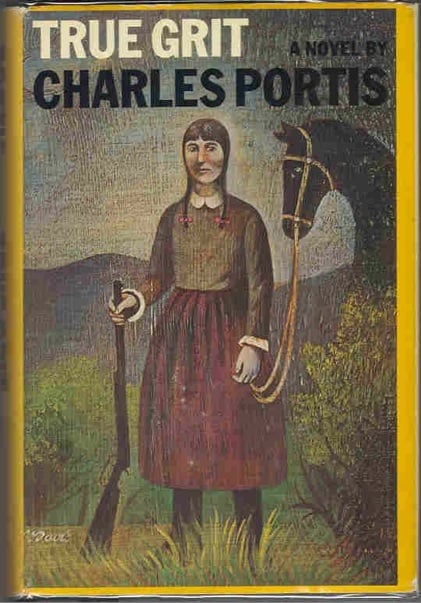
The Best Adventure series of posts will list my favorite 21 adventure novels from each of the 20th Century’s first eight (socio-cultural) decades. Plus, I kicked off the series with a list of the Top 32 adventures from the 19th Century; in total, then, I aim to list 200 of my all-time favorite adventures.
JOSH GLENN’S *BEST ADVENTURES* LISTS: BEST 250 ADVENTURES OF THE 20TH CENTURY | 100 BEST OUGHTS ADVENTURES | 100 BEST RADIUM AGE (PROTO-)SCI-FI ADVENTURES | 100 BEST TEENS ADVENTURES | 100 BEST TWENTIES ADVENTURES | 100 BEST THIRTIES ADVENTURES | 75 BEST GOLDEN AGE SCI-FI ADVENTURES | 100 BEST FORTIES ADVENTURES | 100 BEST FIFTIES ADVENTURES | 100 BEST SIXTIES ADVENTURES | 75 BEST NEW WAVE SCI FI ADVENTURES | 100 BEST SEVENTIES ADVENTURES | 100 BEST EIGHTIES ADVENTURES | 75 BEST DIAMOND AGE SCI-FI ADVENTURES | 100 BEST NINETIES ADVENTURES (in progress) | 1994 | 1995 | 1996 | 1997 | 1998 | 1999 | 2000 | 2001 | 2002 | 2003 | NOTES ON 21st-CENTURY ADVENTURES.
20 ADVENTURE THEMES AND MEMES: Index to All Adventure Lists | Introduction to Adventure Themes & Memes Series | Index to Entire Series | The Robinsonade (theme: DIY) | The Robinsonade (theme: Un-Alienated Work) | The Robinsonade (theme: Cozy Catastrophe) | The Argonautica (theme: All for One, One for All) | The Argonautica (theme: Crackerjacks) | The Argonautica (theme: Argonaut Folly) | The Argonautica (theme: Beautiful Losers) | The Treasure Hunt | The Frontier Epic | The Picaresque | The Avenger Drama (theme: Secret Identity) | The Avenger Drama (theme: Self-Liberation) | The Avenger Drama (theme: Reluctant Bad-Ass) | The Atavistic Epic | The Hide-And-Go-Seek Game (theme: Artful Dodger) | The Hide-And-Go-Seek Game (theme: Conspiracy Theory) | The Hide-And-Go-Seek Game (theme: Apophenia) | The Survival Epic | The Ruritanian Fantasy | The Escapade
This is the eighth post in the series. Here you’ll find a list of my Top 21 Adventures from the Sixties (1964–1973).
ALSO SEE: 75 Best New Wave Sci-Fi (1964–1983) Novels
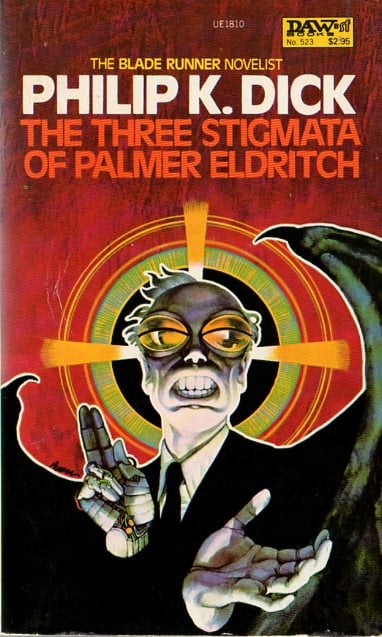
A brave new era for Adventure begins in 1964!
The New Wave era in Adventure’s science fiction sub-genre began in 1964 (when Michael Moorcock took over the editorship of the British sf magazine New Worlds; Jack Kirby also had something to do with it, in science-fiction comics) and lasted through 1983. (Cyberpunk begins in ’84, with Gibson’s Neuromancer.) What was New Wave? The best sf adventures published during the Sixties were characterized by an ambitious, self-consciously artistic sensibility. Many of my favorites — including Philip K. Dick’s The Three Stigmata of Palmer Eldritch, Martian Time-Slip, Do Androids Dream of Electric Sheep?, and Ubik; William S. Burroughs’s Nova Express; Ursula K. Le Guin’s The Lathe of Heaven; Samuel R. Delany’s Nova; Kurt Vonnegut’s Slaughterhouse-Five; and Michael Moorcock’s The Final Programme — concern themselves, at the level of both content and form, with the nature of perception itself.
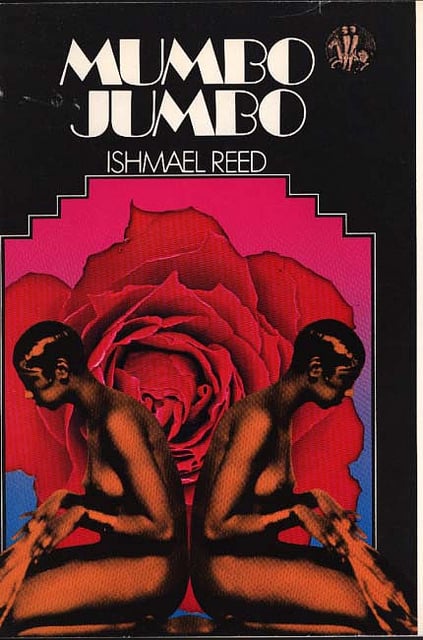
Certain far-out examples of non-sf adventure lit from the Sixties were self-consciously artistic, and concerned — at the level of both content and form — with the nature of perception itself. Thomas Pynchon’s The Crying of Lot 49 and Gravity’s Rainbow are the examples that will immediately spring to mind for most people. Other self-reflexive, postmodernist, sardonic inversions of the adventure genre from 1964–1973 include: Thomas Berger’s Little Big Man, Richard Fariña’s Been Down So Long It Looks Like Up to Me, Ishmael Reed’s Yellow Back Radio Broke-Down and Mumbo Jumbo, Hunter S. Thompson’s Fear and Loathing in Las Vegas, William Goldman’s The Princess Bride, and J.G. Ballard’s Crash. If the avant-garde stories I’ve just mentioned aren’t for you, not to worry: paperback racks in the Sixties were replete with straightforward adventures by the likes of Alistair MacLean, Francis Clifford, Desmond Cory, Duncan Kyle, Andrew Garve, Gavin Lyall, and Desmond Bagley.
As WWII receded from the present, and as the era of anti-Communist paranoia and hysteria ended, the context for straightforward adventure novels became… let’s call it a quagmire. Vietnam didn’t lend itself directly to heroic adventure writing; instead, it inspired the rise of the anti-hero. The protagonists of Charles Portis’s True Grit, George MacDonald Fraser’s Flashman adventures, Frederick Forsyth’s The Day of the Jackal, Trevanian’s The Eiger Sanction, perhaps even James Dickey’s Deliverance — they’re not fighting in Vietnam, but that’s their context. PS: There was a Sixties war whose advent and outcome served as a backdrop to three excellent adventure novels of the period. The 1967 Arab-Israeli War (also known as the Six-Day War) is the lens through which Lionel Davidson’s A Long Way to Shiloh, Making Good Again, and Smith’s Gazelle ought to be viewed.
Adventure TV shows and movies from 1964–1973 often put a sardonic twist on the adventure genre: Hogan’s Heroes plays the prison-break/WWII adventure trope for laughs; Gilligan’s Island does the same for the Robinsonade. (The Prisoner was self-consciously artistic, and concerned — at the level of content and form — with the nature of perception itself.) Movies, too: Michael Caine’s Len Deighton spy movies, James Coburn in Our Man Flint, even the Beatles’ Help! were sardonic inversions of Adventure’s espionage sub-genre. Sergio Leone’s movies with Clint Eastwood are revisionist Westerns. Many other movies from the era — The Dirty Dozen, The Wild Bunch, Tom Laughlin’s Billy Jack — are Vietnam-inflected actioners.
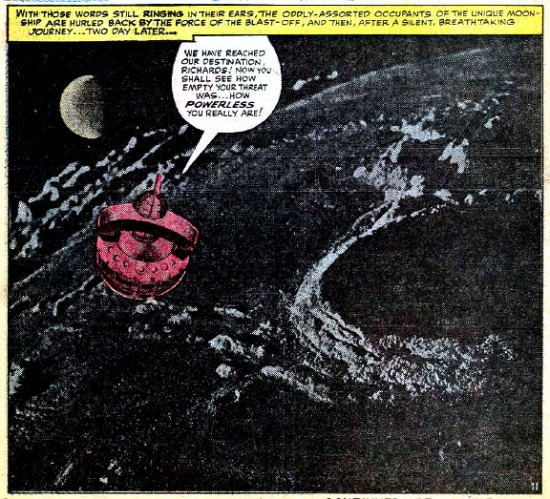
One final note. If the Golden Age for children’s and YA adventures began in the Fifties (see the previous post in this series), then that Golden Age reached its apex from 1964–1973. Susan Cooper’s Dark is Rising series, Louise Fitzhugh’s Harriet the Spy, Hugo Pratt’s Corto Maltese comic strip, Richard Adams’s Watership Down, Ursula K. Le Guin’s Earthsea series, Roald Dahl’s Charlie and the Chocolate Factory, Joan Aiken’s Wolves Chronicles series, Madeleine L’Engle’s A Wind in the Door, Jean Merrill’s The Pushcart War, John Christopher’s Tripods trilogy and Sword of the Spirits trilogy, S.E. Hinton’s The Outsiders, E.L. Konigsburg’s From the Mixed-Up Files of Mrs. Basil E. Frankweiler, Peter Dickinson’s Changes trilogy, Robert C. O’Brien’s Mrs. Frisby and the Rats of NIMH, Ian Fleming’s Chitty-Chitty-Bang-Bang, Lloyd Alexander’s Chronicles of Prydain series, Alan Garner’s Elidor and The Owl Service, not to mention Jack Kirby’s various “Fourth World” DC comics series and Kamandi: The Last Boy on Earth… it doesn’t get any better than this.
As in each post from this series, I’ve appended a list of 29 second-tier favorites — for a grand total of 50 Top Adventures of the Sixties. Plus a third-tier list that features, among other thing, many obscure adventures. These ought not to be thought of as “third-rate” (I wouldn’t mention them if they weren’t worth reading) but instead as Most Deserving of Rediscovery. Please leave suggestions and feedback.
If you’re interested in reading re-discovered science fiction adventures, check out the 10 titles from HiLoBooks — available online and in gorgeous paperback form.
In chronological order:
- 1964. Louise Fitzhugh’s YA espionage adventure Harriet the Spy. Perhaps my favorite YA novel ever. Harriet is an amazing character. She’s praiseworthy in her intrepid, self-motivated, eccentric (and un-supervised) adventuring; a talented crafter of gnomic aperçus; a loyal friend and a terrifying enemy. And yet, she’s in the wrong; the reader knows it, and so does everybody else in the book. It’s an emotional roller-coaster ride.
- 1964. Thomas Berger’s revisionist Western Little Big Man. Jack Crabb, a 111-year-old survivor of Custer’s Last Stand, narrates his mock-heroic, picaresque adventures. As his roles vary over the course of his wanderings, from Cheyenne warrior to Army scout to small-time huckster, so does the style of Crabb’s (unreliable) narrative. Adapted as a movie in 1970 by Arthur Penn.
- 1965. Philip K. Dick’s science fiction adventure The Three Stigmata of Palmer Eldritch. Via an odyssey of nested hallucinations, the Gnostic idea that the world is the creation not of God, but of an evil, lesser deity, is burned forever into the reader’s mind. The title character is a demiurge who brings to mankind a “negative trinity” of “alienation, blurred reality, and despair.”
- 1965. Sol Yurick’s hunted-man adventure The Warriors, which was loosely based on Xenophon’s Anabasis — which recounts the travails of Greek mercenaries betrayed and stranded deep within enemy territory. After an assembly of gangs devolves into chaos, the Coney Island Dominators, a black/Hispanic gang of murderers and rapists, must trek home from the Bronx — all the while defending their thuggish sense of manhood — through gang turfs. Adapted into the cult 1979 movie of the same title.
- 1965. Frank Herbert’s science fiction adventure Dune, a potboiler about one family’s declining empire, a mythology-saturated fantasy about the founding of a new social order, and a band-of-brothers yarn (Thufir Hawat, the human computer; Gurney Halleck, the troubadour warrior; master swordsman Duncan Idaho). It’s also a criticism of humankind’s despoliation of nature in the name of progress. Plus: Alia, a telepathic four-year-old girl, roams the battlefields of Arrakis slitting the throats of imperial stormtroopers! The Bene Gesserit, who subtly guide humanity’s development! The worm-riding Fremen! Wow.
- 1966. J.G. Ballard’s science fiction adventure The Crystal World. In the Cameroon Republic, a British doctor discovers that entrance to the forest is being discouraged… but he can’t figure out why. Seeking his friends, who run a leper colony, he travels upriver and discovers a forest of glass. Trees, grass, water, animals and men are slowly encased in glittering crystals. The universe, its myriad of possibilities, is crystallizing into sameness. Serialized in the first Moorcock-edited issue of New Worlds.
- 1966. Thomas Pynchon’s apophenic adventure The Crying of Lot 49. California housewife Oedipa Maas uncovers a centuries-old conflict between two mail distribution companies; or perhaps she’s detecting signals where there is only noise. “The ordered swirl of houses and streets, from this high angle, sprang at her now with the same unexpected, astonishing clarity as the circuit card had. Though she knew even less about radios than about Southern Californians, there were to both outward patterns a hieroglyphic sense of concealed meaning, of an intent to communicate.”
- 1966. Richard Fariña’s comical picaresque Been Down So Long It Looks Like Up to Me. The adventures of undergrad Gnossos Pappadoupoulis in the American West, in Cuba during the revolution, and at an upstate New York university. The author was a folksinger who died in a motorcycle accident two days after this first novel was published.
- 1966. Lionel Davidson’s hunted-man adventure A Long Way to Shiloh (aka The Menorah Men). Caspar Laing, a British professor of Semitic Languages, is asked to translate an ancient scroll found in Israel — which appears to give directions to the hiding place of a sacred menorah rescued from the Jerusalem Temple in 70 AD. The Jordanians are also hunting for the menorah… and what’s worse, the scroll is purposely misleading. Veers from deadly cat-and-mouse chills to hermeneutic thrills. Also, it’s funny!
- 1968. Charles Portis’s satirical Western adventure True Grit, which is told from the perspective of a 14-year-old girl seeking retribution for the murder of her father. Considered one of the great American novels. John Wayne would win a Best Actor Oscar for his portrayal of Rooster Cogburn in the 1969 movie adaptation; the 2010 Coen Brothers adaptation is also excellent.
- 1969. Ishmael Reed’s African-American postmodern Western adventure Yellow Back Radio Broke-Down. Set in a time warp, it concerns the battle of black cowboy The Loop Garoo Kid against an evil rancher. It introduces Reed’s concept of HooDoo, i.e., the primitive forces of life pitted against the white Christian tradition.
- 1969. Kurt Vonnegut’s science fiction adventure Slaughterhouse-Five. Billy Pilgrim witnesses the firebombing of Dresden in WWII while “time-tripping” to the distant planet of Tralfamadore, where he is put in a zoo and mated with a movie star. Sardonic inversion of the genre; considered the author’s masterpiece.
- 1969. Ursula K. Le Guin’s Hainish science fiction adventure The Left Hand of Darkness. A much-admired novel set on a frozen planet whose denizens are neither female nor male: they have gender identities and sexual urges only once a month. When a Terran envoy, Genly Ai, and an exiled native politician, Estraven, escape from a prison together, they battle snow and ice together; and as Estraven changes from male to female, Ai questions the binary assumptions that structure his own worldview. Harold Bloom said, of this book: “Le Guin, more than Tolkien, has raised fantasy into high literature, for our time.”
- 1971. Walker Percy’s satirical science fiction adventure Love in the Ruins. When Sixties-type political and cultural divides lead America to devolve into chaos, a small-town Louisiana psychiatrist sets up a love nest at an abandoned motel — and uses his invention, the Ontological Lapsometer, to diagnose and treat the harmful mental states at the root of the social crisis. “For the world is broken, sundered, busted down the middle, self ripped from self and man pasted back together as mythical monster, half angel, half beast, but no man….”
- 1971. Lionel Davidson’s frontier adventure Smith’s Gazelle, which should be much better-known. A 9-year-old Bedouin boy and a 9-year-old Israeli kibbutznik runaway meet in a hidden ravine in the Israeli desert, which is rumored to be haunted by djinns; though Ishmael and Jacob have been raised as foes, they become friends. Turns out that a reclusive, crazed, and deformed Bedouin shepherd has bred a herd of gazelle in the ravine; an Israeli officer and others are searching for evidence that these gazelle — a species thought to be extinct — do in fact exist. And then the Six-Day War happens.
- 1972. Hunter S. Thompson’s Fear and Loathing in Las Vegas. Subtitled A Savage Journey to the Heart of the American Dream, the novel is a sardonic inversion of the picaresque. Raoul Duke, a journalist who bears a striking resemblance to Thompson, and his attorney, Dr. Gonzo (based on Oscar Zeta Acosta), arrive in Las Vegas to report on a motorcycle race. Loaded to the gills with LSD, ether, cocaine, alcohol, mescaline, and cannabis, they destroy hotel rooms, wreck cars, experience visions in the desert, and comment on how the promise of the Sixties — not to mention the American dream — hasn’t panned out.
- 1972. Ishmael Reed’s metafictional crime adventure Mumbo Jumbo, which is set in 1920s New York — locus of a virus known as “Jes Grew,” which influences people to listen to ragtime and jazz, dance, and be happy. (It also infects the book — whose format is disrupted by radio dispatches, photographs, drawings, footnotes — itself. Agents of the white, western, Christian hegemony attempt to suppress the virus. Other agents — including the Mu’tafika, who steal historical artifacts from Western museums and return them to their places of origin — work against the hegemony. PaPa LaBas, a Voodoo practitioner, is drawn into the conflict.
- 1972. Richard Adams’s epic talking-animal adventure Watership Down, sometimes called the rabbits’ Aeneid. A group of rabbits escape the destruction of their warren and journey across south-central England in search of a new home. Along the way, they encounter predators, snares, and automobiles; and they’re tempted to join un-free rabbit societies; the monstrous rabbit leader of one of these societies leads an attack on their new warren. Fortunately, the nomadic rabbits are resourceful and brave… and they’ve learned how to survive and thrive from the lapine mythology of El-ahrairah the trickster.
- 1972. Trevanian’s espionage adventure The Eiger Sanction, the author’s first novel. In this sardonic inversion of the espionage sub-genre, an art professor and mountaineer who doubles as a hired assassin for a CIA-like government agency, is tricked into a hazardous “sanction” that involves an attempt to scale one of the most treacherous peaks in the Swiss Alps. Trevanian (film scholar Rodney William Whitaker) has been called “the only writer of airport paperbacks to be compared to Zola, Ian Fleming, Poe and Chaucer.” The book was adapted into a weird, vapid 1975 movie directed by and starring Clint Eastwood.
- 1973. Thomas Pynchon’s Gravity’s Rainbow. Set during the waning days of WWII, Pynchon’s infamous masterpiece is an espionage adventure revolving around the quest to uncover the secret of a mysterious device (the “Schwarzgerät) that is to be installed in a German V-2 rocket with the serial number “00000.” (The book’s title refers to the parabolic trajectory of a V-2, as well as to the introduction of randomness into physics via quantum mechanics.) But the book is also a picaresque adventure following naive Tyrone Slothrop, a naive Allied Intelligence operative, as he wanders — under surveillance — around London and Europe.
- 1973. J.G. Ballard’s survivalist adventure Crash… whose theme I describe as “survivalist” because the author’s earlier novels were sardonic inversions of Adventure’s survivalist sub-genre. Whereas those other books (The Drowned World, The Crystal World, etc.) were cataclysms set in the future; Crash takes place in the cataclysmic present, i.e., in a social order where catastrophe has become normalized. When “Ballard,” our narrator, is involved in a car crash, he is drawn into the orbit of Dr. Vaughan, leader of a cult of crash victims who are sexually aroused by re-enacting fatal celebrity car crashes.
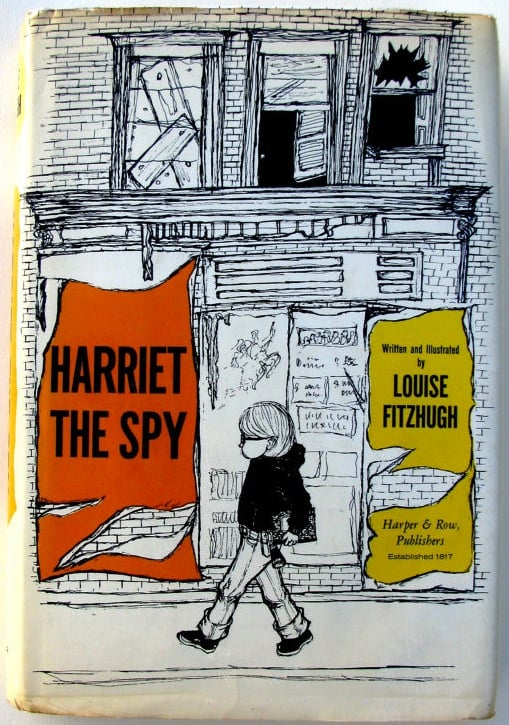

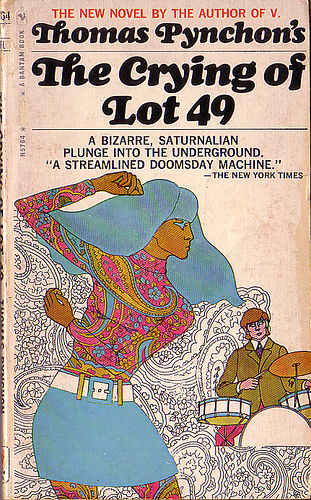

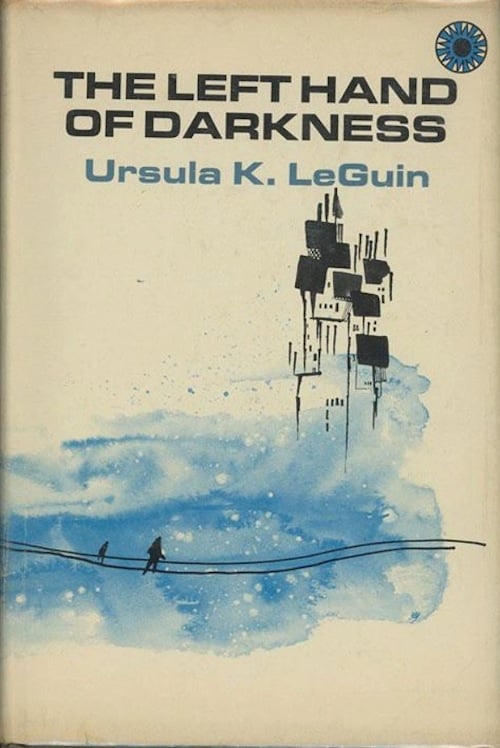
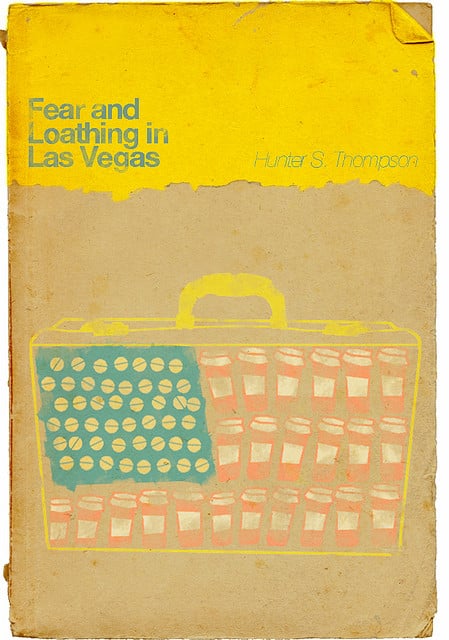
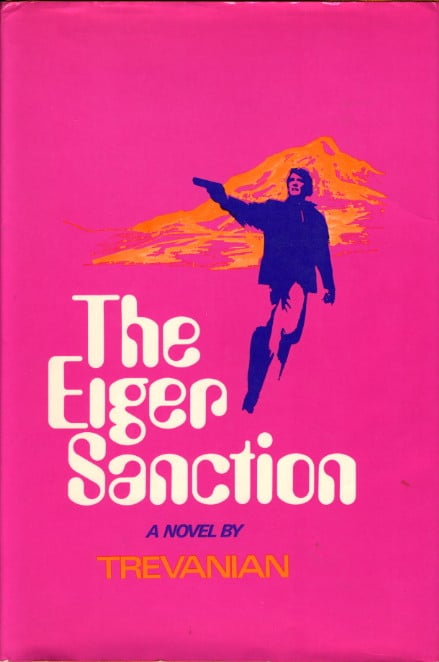
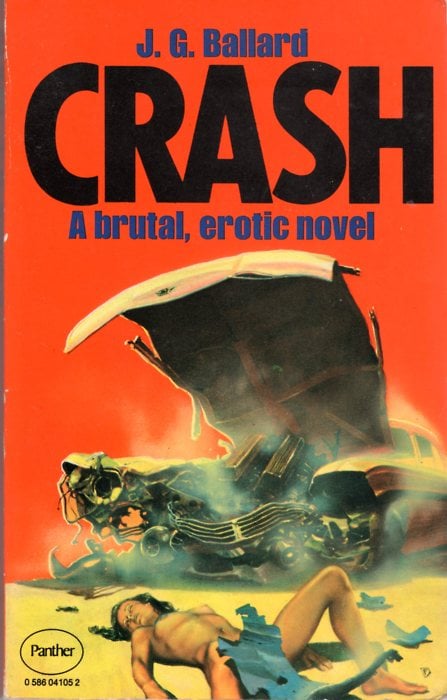
Thanks! To the nearly 400 adventure fans who kickstarted the SAVE THE ADVENTURE e-book club.
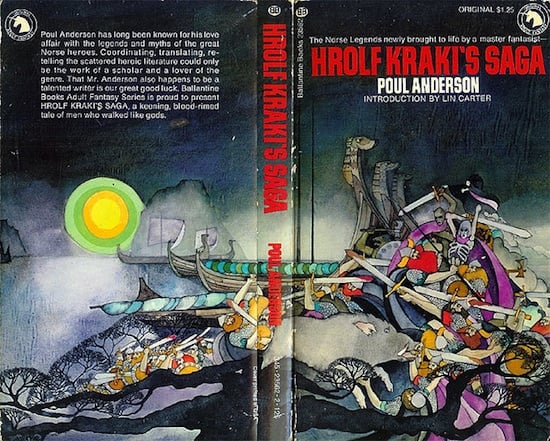
- 1964. Philip K. Dick’s science fiction adventure Martian Time-Slip.
- 1964. Jim Thompson’s crime adventure Pop. 1280.
- 1964. Roald Dahl’s children’s fantasy adventure Charlie and the Chocolate Factory.
- 1964. William S. Burroughs’s science fiction adventure Nova Express.
- 1964. John D. MacDonald’s Travis McGee crime adventure The Deep Blue Good-by. The first in a long, much-beloved series of pulp novels.
- 1967. John Christopher’s YA science fiction adventure The White Mountains. First in the Tripods trilogy.
- 1967. Ishmael Reed’s comical picaresque The Free-Lance Pallbearers. Bukka Doopeyduk searches for selfhood and ends up getting crucified beneath a giant ball of human excrement. The author’s first novel.
- 1967–69. Hugo Pratt’s Corto Maltese comic-strip adventure Ballad of the Salt Sea.
- 1967. Alistair MacLean’s WWII commando adventure Where Eagles Dare.
- 1960s/1980. John Kennedy Toole’s A Confederacy of Dunces. Sardonic inversion of the picaresque; or perhaps of the meaningful-work-style Robinsonade. Written during the Sixties, published some years after the author’s death by Walker Percy.
- 1968. Philip K. Dick’s science fiction adventure Do Androids Dream of Electric Sheep?.
- 1968. Ursula K. Le Guin’s Earthsea fantasy adventure A Wizard of Earthsea.
- 1968. Samuel R. Delany’s science fiction adventure Nova.
- 1968. James Blish’s fantasy adventure Black Easter. An arms dealer hires a black magician to unleash all the demons of Hell on Earth for a single day.
- 1969. Elmore Leonard’s crime adventure The Big Bounce. First of the author’s many crime thrillers.
- 1969. Kingsley Amis’s fantasy adventure The Green Man.
- 1969. Philip K. Dick’s science fiction adventure Ubik.
- 1970. Poul Anderson’s science fiction adventure Tau Zero. A spaceship is caught in an uncontrollable acceleration. One of the author’s best science fiction novels. (I prefer his fantasy.)
- 1971. Frederick Forsyth’s The Day of the Jackal, the author’s first novel. A professional assassin is contracted by a French dissident paramilitary organization to kill Charles de Gaulle. Like Forsyth’s subsequent books, this one — which was written in a few weeks — is more concerned with tradecraft than with character development; its focus is on how the assassination will occur, not on the assassin or the assassination itself. Not particularly well-written, but closely researched and credible.
- 1971. Ursula K. LeGuin’s science fiction adventure The Lathe of Heaven.
- 1971. M. John Harrison’s science fantasy adventure The Pastel City.
- 1971. Robert C. O’Brien’s children’s science-fiction adventure Mrs. Frisby and the Rats of NIMH.
- 1972. Angela Carter’s fantasy adventure The Infernal Desire Machines of Dr Hoffman.
- 1972/1976. Ursula K. LeGuin’s science fiction adventure The Word for World is Forest.
- 1973. Poul Anderson’s fantasy/atavistic adventure Hrolf Kraki’s Saga, retelling the story of a legendary 6th-century Danish king from such sources as Iceland’s Hrólfs saga kraka.
- 1973. Susan Cooper’s Dark is Rising YA fantasy adventure The Dark is Rising. The second in a series of five.
- 1973. Alan Garner’s fantasy adventure Red Shift. The author of some of my favorite YA fantasy here portrays a present-day England overlaid by a disintegrating Vietnam-like Roman Britain. A darker version of what Susan Cooper was doing at the same time.
- 1973. J.G. Farrell’s The Siege of Krishnapur. It details the siege of a fictional Indian town during the Indian Rebellion of 1857 from the perspective of the British residents. It is the second installment in Farrell’s Empire Trilogy.
- 1973. William Goldman’s fantasy adventure The Princess Bride. An ironic homage to the genre.
- 1964. Ian Fleming’s YA espionage adventure Chitty-Chitty-Bang-Bang.
- 1964. Ian Fleming’s James Bond espionage adventure You Only Live Twice. Introduced the ninja meme to pop culture.
- 1964. John D. MacDonald’s Travis McGee crime adventure Nightmare in Pink.
- 1964. Helen MacInnes’s adventure Home Is the Hunter.
- 1964/68/75. Cordwainer Smith’s science fiction adventure Norstrilia. Originally published in two volumes in edited form as The Planet Buyer, also known as The Boy Who Bought Old Earth (1964) and The Underpeople (1968).
- 1964. Richard Stark (Donald E. Westlake)’s Parker crime adventure The Score.
- 1964. John D. MacDonald’s Travis McGee crime adventure A Purple Place for Dying.
- 1964. Joan Aiken’s YA historical adventure Black Hearts in Battersea. Second in Aiken’s 12-part Wolves Chronicles series.
- 1964. Andrew Garve’s adventure Frame-Up.
- 1964. Len Deighton’s espionage adventure Funeral in Berlin. The protagonist, who is unnamed, travels to Berlin to arrange the defection of a Soviet scientist named Semitsa.
- 1964. Lloyd Alexander’s Chronicles of Prydain YA fantasy adventure The Book of Three. The first in a series of five.
- 1964. John D. MacDonald’s Travis McGee crime adventure The Quick Red Fox.
- 1964. Philip K. Dick’s science fiction adventure The Simulacra.
- 1964. Brian W. Aldiss’s science fiction adventure Greybeard.
- 1964. J.G. Ballard’s science fiction adventure The Burning World.
- 1964.Robert Heinlein’s science fiction adventure Farnham’s Freehold. A Robinsonade of sorts.
- 1964. Francis Clifford’s adventure The Hunting-Ground. An Irish photographer is caught up in a mess when he witnesses a plane crash in the Caribbean.
- 1964. Wilbur Smith’s frontier adventure When the Lion Feeds. Two British brothers are caught up in the Zulu War; one becomes a rich prospector on the Transvaal, the other his rival.
- 1964. Philip K. Dick’s science fiction adventure The Clans of the Alphane Moon.
- 1964. Jean Merrill’s children’s adventure The Pushcart War.
- 1964. Eric Ambler’s espionage adventure A Kind of Anger.
- 1964. John Christopher’s island adventure Sweeney’s Island is a sardonic inversion of the Robinsonade.
- 1964. Jack Higgins’s vigilante adventure Passage By Night, set in Cuba.
- 1964. Francis Clifford’s adventure Third Side of the Coin.
- 1964. Philip K. Dick’s science fiction adventure The Penultimate Truth.
- 1964. Amanda Cross’s (Carolyn Heilbrun) crime adventure In the Last Analysis, the first in a series of mysteries — parodying Dorothy Sayers — featuring Kate Fansler, a feminist and literary scholar.
- 1964. Jack Higgins’s historical crime adventure Thunder at Noon, a romanticized version of the career of bank robber John Dillinger.
- 1964. James Mayo’s (Stephen Coulter) Charles Hood espionage adventure Moscow Coach.
- 1964. Philip McCutchan’s Esmonde Shaw espionage adventure Moscow Coach.
- 1964. Jack Higgins’s military adventure Wrath of the Lion. Concerns efforts to track down a renegade submarine.
- 1965. Richard Stark (Donald E. Westlake)’s Parker crime adventure The Jugger.
- 1965. Jack Higgins’s Paul Chavasse espionage adventure The Keys of Hell.
- 1965. John le Carré’s espionage adventure The Looking Glass War.
- 1965. Susan Cooper’s Dark is Rising YA fantasy adventure Over Sea, Under Stone. The first in a series of five.
- 1965. Adam Hall’s crime adventure The Quiller Memorandum (aka The Berlin Memorandum).
- 1965. Jack Higgins’s Nick Miller crime adventure The Graveyard Shift.
- 1965. Michael Moorcock’s Elric fantasy adventure Stormbringer.
- 1965. Peter O’Donnell’s espionage adventure Modesty Blaise. Featuring the character Modesty Blaise, who O’Donnell had created for a comic strip in 1963. First in a series of 13 novels and story collections.
- 1965. Gavin Lyall’s hunted-man adventure Midnight Plus One concerns a couple of crackerjacks — one ex-French Resistance, the other ex-Secret Service — hired to protect a businessman from assassins who pursue him across Europe.
- 1965. Desmond Bagley’s extreme-conditions adventure High Citadel, in which a passenger plane is hijacked over the Andes causing a crash. The pilot attempts to lead the survivors down the mountain but the way is blocked by a damaged bridge, the opposing end of which is… held by soldiers who want at least some of them dead!
- 1965. Alan Garner’s YA fantasy adventure Elidor.
- 1965. Andrew Garve’s adventure The Ashes of Loda.
- 1965. John D. MacDonald’s Travis McGee crime adventure A Deadly Shade of Gold.
- 1965. Jim Thompson’s crime adventure Texas By the Tail.
- 1965. L. Sprague De Camp’s historical adventure The Arrows of Hercules. One of five by the same author.
- 1965. Agatha Christie’s crime adventure At Bertram’s Hotel.
- 1965. John D. MacDonald’s Travis McGee crime adventure Bright Orange for the Shroud.
- 1965. Geoffrey Household’s adventure Olura.
- 1965. Desmond Cory’s crime adventure Deadfall.
- 1965. Lloyd Alexander’s YA fantasy adventure The Black Cauldron. The second in a series of five Chronicles of Prydain stories, which use Welsh mythology (Prydain is the medieval Welsh term for the Brittonic parts of the island of Britain), particularly the Mabinogion, for inspiration. This is my favorite book in the series — because of its great characters: Prince Ellidyr, who loves only his horse; sickly Gwystyl of the Fair Folk; the sorceresses Orddu, Orwen and Orgoch; and the doomed minstrel Adaon.
- 1965. Stan Lee and Jack Kirby’s The Inhumans. They first appeared in Fantastic Four in 1965.
- 1965. Ronald Johnston’s island adventure Danger at Bravo Key takes place on an uninhabited Caribbean island.
- 1965. Philip K. Dick’s science fiction adventure Dr. Bloodmoney.
- 1965. Donald Hamilton’s espionage adventure The Devastators, one of the best and most complex installments in the Matt Helm series. When a mad scientist goes into hiding in Scotland, with plans to unleash a deadly plague, agents from England, Russia, China, and America converge.
- 1965. Fritz Leiber’s science fiction adventure The Wanderer.
- 1965. Ian Fleming’s James Bond espionage adventure The Man with the Golden Gun.
- 1965. James Dark’s (J.E. Macdonnell) Mark Hood espionage adventure Come Die With Me.
- 1965. James Mayo’s (Stephen Coulter) Charles Hood espionage adventure Let Sleeping Girls Lie.
- 1965. James Dark’s (J.E. Macdonnell) Mark Hood espionage adventure The Bamboo Bomb.
- 1966. Philip K. Dick’s science fiction adventure The Crack in Space.
- 1966. Lloyd Alexander’s Chronicles of Prydain YA fantasy adventure The Castle of Llyr. The third in a series of five.
- 1966. Richard Stark (Donald E. Westlake)’s Parker crime adventure The Seventh.
- 1966. Philip K. Dick’s science fiction adventure Now Wait for Last Year.
- 1966. Jack Higgins’s Paul Chavasse espionage adventure Midnight Never Comes.
- 1966. Ursula K. Le Guin’s Hainish science fiction adventure Rocannon’s World.
- 1966. Richard Stark (Donald E. Westlake)’s Parker crime adventure The Handle.
- 1966. Joan Aiken’s YA historical adventure Nightbirds on Nantucket. Third in Aiken’s 12-part Wolves Chronicles series.
- 1966. Alistair MacLean’s adventure When Eight Bells Toll.
- 1966. Francis Clifford’s hunted-man adventure The Naked Runner. A recently widowed Englishman travels to Leipzig with his teen-age son. In a matter of days the fatherly businessman has become a cold and vicious killer stalking his quarry.
- 1966. Andrew Garve’s adventure Murderer’s Fen
- 1966. Graham Greene’s political thriller The Comedians. Set in Haiti under the rule of François “Papa Doc” Duvalier and his secret police, the Tonton Macoute. Adapted into a 1967 movie.
- 1966. Philip K. Dick’s science fiction adventure The Unteleported Man.
- 1966. Michael O’Donoghue and Frank Springer’s satirical graphic novel The Adventures of Phoebe Zeit-Geist.
- 1966. Ursula K. Le Guin’s Hainish science fiction adventure Planet of Exile.
- 1966. John D. MacDonald’s Travis McGee crime adventure Darker than Amber.
- 1966. Roger Zelazny’s science fiction adventure The Dream Master.
- 1966. James Clavell’s adventure Tai-Pan. Takes place against the backdrop of the British seizure of Hong Kong.
- 1966. Harry Harrison’s science fiction adventure Make Room! Make Room!. Adapted in 1973 as the movie Soylent Green.
- 1966. Gavin Lyall’s crime adventure The Shooting Script.
- 1966. Helen MacInnes’s adventure The Double Image. A best-seller at the time.
- 1966. John D. MacDonald’s Travis McGee crime adventure One Fearful Yellow Eye.
- 1966. Jack Higgins’s adventure East of Desolation. One of the author’s best early novels. A plane crashes in Greenland — why?
- 1966. Daniel Keyes’s science fiction adventure Flowers for Algernon.
- 1966. James Dark’s (J.E. Macdonnell) Mark Hood espionage adventure Hong Kong Incident.
- 1966. Jack Higgins’s IRA adventure A Candle for the Dead. Adapted in 1967 as The Violent Enemy.
- 1966. James Dark’s (J.E. Macdonnell) Mark Hood espionage adventure Assignment Tokyo.
- 1966. Philip McCutchan’s Esmonde Shaw espionage adventure The Dead Line.
- 1966. James Mayo’s (Stephen Coulter) Charles Hood espionage adventure Shamelady.
- 1966. James Dark’s (J.E. Macdonnell) Mark Hood espionage adventure Spy from the Deep.
- 1966. Jack Higgins’s adventure In the Hour Before Midnight, which opens with a daring prison break, followed by efforts to rescue a girl kidnapped and held somewhere in Sicily.
- 1966. Philip McCutchan’s Esmonde Shaw espionage adventure Skyprobe.
- 1966. Jack Higgins’s adventure The Iron Tiger. Considered one of the best of his early novels. A perilous journey across Tibet in the midst of the Chinese invasion.
- 1966–67. Hergé’s Tintin adventure Flight 714.
- 1967. Evelyn Anthony’s romantic suspense adventure The Rendezvous.
- 1967. Donald Barthelme’s absurdist fairy tale Snow White, featuring a liberated heroine and a cast of priapic dwarves.
- 1967. Alan Garner’s YA fantasy adventure The Owl Service.
- 1967. Michael Tournier’s Vendredi ou les Limbes du Pacifique is a sardonic inversion of the Robinsonade.
- 1967. Jack Higgins’s Nick Miller crime adventure Brought in Dead.
- 1967. Ursula K. Le Guin’s Hainish science fiction adventure City of Illusions.
- 1967. Jack Higgins’s Paul Chavasse espionage adventure Dark Side of the Street.
- 1967. Edgar P. Jacobs’s Blake & Mortimer sci-fi espionage comic-book adventure The Necklace Affair.
- 1967. Francis Clifford’s espionage adventure All Men Are Lonely Now, which the Los Angeles Times called the best espionage novel of the decade.
- 1967. Eric Ambler’s adventure Dirty Story, about a mercenary.
- 1967. Jim Thompson’s crime adventure South of Heaven.
- 1967. S.E. Hinton’s YA adventure The Outsiders. The author’s first novel, begun when she was a high school sophomore. One of the most emulated YA novels of all time; credited with revolutionizing the genre.
- 1967. E.L. Konigsburg’s YA adventure From the Mixed-Up Files of Mrs. Basil E. Frankweiler.
- 1967. Geoffrey Household’s adventure The Courtesy of Death.
- 1967. Andrew Garve’s adventure A Very Quiet Place.
- 1967. Richard Brautigan’s picaresque Trout Fishing in America. A cult classic.
- 1967. Philip K. Dick’s science fiction adventure The Zap Gun.
- 1967. Lloyd Alexander’s Chronicles of Prydain YA fantasy adventure Taran Wanderer. The fourth in a series of five.
- 1967. Richard Stark (Donald E. Westlake)’s Parker crime adventure The Rare Coin Score.
- 1967. Geoffrey Household’s frontier adventure Dance of the Dwarfs.
- 1967. Philip K. Dick’s science fiction adventure The Ganymede Takeover.
- 1967. Ira Levin’s occult/psychological thriller Rosemary’s Baby. Not exactly an adventure. A best-seller at the time.
- 1967. Philip K. Dick’s science fiction adventure Counter-Clock World.
- 1967. Frederick Adam Diment’s espionage adventure The Dolly Dolly Spy. The first of four novels about Philip McAlpine, whom Anthony Boucher described as “an agent who smokes hashish, leads a highly active sex life, kills vividly, uses (or even coins) the latest London slang and still seems a perfectly real (and even oddly likeable) young man rather than a reflected Bond image.” Sardonic inversion of the genre.
- 1967. Geoffrey Household’s YA adventure The Prisoner of the Indies.
- 1967. Roger Zelazny’s science fiction adventure Lord of Light.
- 1967. Richard Stark (Donald E. Westlake)’s Parker crime adventure The Green Eagle Score.
- 1967. James Dark’s (J.E. Macdonnell) Mark Hood espionage adventure Operation Scuba.
- 1967. John Christopher’s YA science fiction adventure The City of Gold and Lead. Second in the Tripods trilogy.
- 1967. James Dark’s (J.E. Macdonnell) Mark Hood espionage adventure Throne of Satan.
- 1967. James Dark’s (J.E. Macdonnell) Mark Hood espionage adventure The Sword of Genghis Khan.
- 1967. Emma Lathen’s crime adventure Murder Against the Grain. It’s been called one of the 30 essential crime reads written by women in the last 100 years.
- 1968. Maj Sjöwall & Per Wahlöö’s crime adventure The Laughing Policeman.
- 1968. John le Carré’s espionage adventure A Small Town in Germany. A best-seller at the time.
- 1968. Alistair MacLean’s adventure Force 10 From Navarone.
- 1968. John Brunner’s science fiction adventure Stand on Zanzibar. Great novel — not exactly an adventure.
- 1968. Joan Aiken’s YA historical adventure The Whispering Mountain. Fourth in Aiken’s 12-part Wolves Chronicles series.
- 1968. Thomas M. Disch’s science fiction adventure Camp Concentration.
- 1968. Michael O’Donoghue and Phil Wende’s satirical children’s book The Incredible, Thrilling Adventures of the Rock.
- 1968. Peter Dickinson’s YA fantasy adventure The Weathermonger. First in the Changes trilogy.
- 1968. Keith Roberts’s science fiction adventure Pavane.
- 1968. Francis Clifford’s adventure Another Way of Dying. A former commando and demolition expert is coerced into helping Sicilian thugs spring a killer from prison.
- 1968. John Christopher’s YA science fiction adventure The Pool of Fire. Third in the Tripods trilogy.
- 1968. John D. MacDonald’s Travis McGee crime adventure Pale Gray for Guilt.
- 1968. Lionel Davidson’s adventure Making Good Again.
- 1968. Richard Stark (Donald E. Westlake)’s Parker crime adventure The Black Ice Score.
- 1968. Lloyd Alexander’s Chronicles of Prydain YA fantasy adventure The High King. The fifth in a series of five.
- 1968. Robert Markham (Kingsley Amis)’s James Bond espionage adventure Colonel Sun.
- 1968. John D. MacDonald’s Travis McGee crime adventure The Girl in the Plain Brown Wrapper.
- 1968. Jack Higgins’s Nick Miller crime adventure Hell is Always Today.
- 1968. Helen MacInnes’s adventure The Salzburg Connection. A best-seller at the time.
- 1968. Andrew Garve’s crime adventure The Long Short Cut.
- 1968. John H. Reese’s crime adventure The Looters. Adapted as the 1973 Don Siegel movie Charlie Varrick starring Walter Matthau.
- 1968. James Dark’s (J.E. Macdonnell) Mark Hood espionage adventure Spying Blind.
- 1968. James Mayo’s (Stephen Coulter) Charles Hood espionage adventure Once in a Lifetime. Published in the US as Sergeant Death.
- 1968. Philip McCutchan’s Esmonde Shaw espionage adventure The Screaming Dead Balloons.
- 1968. James Dark’s (J.E. Macdonnell) Mark Hood espionage adventure Operation Octopus.
- 1969. Evelyn Anthony’s romantic suspense adventure The Assassin.
- 1969. Bob Shaw’s science fiction adventure The Palace of Eternity.
- 1969. Michael Moorcock’s science fiction adventure The Final Programme. The first of his Jerry Cornelius series of novels and stories.
- 1969. Chester Himes’s crime adventure Blind Man with a Pistol.
- 1969. Eric Ambler’s adventure The Intercom Conspiracy. Two professional spies decide to go into business for themselves; a sardonic inversion of the Ambler genre. Alas, not particularly strong.
- 1969. L. Sprague De Camp’s historical adventure The Golden Wind. One of five by the same author.
- 1969. Jack Higgins’s Paul Chavasse espionage adventure A Fine Night for Dying.
- 1969. Norman Spinrad’s science fiction adventure Bug Jack Barron. Michael Moorcock’s serialization of Bug Jack Barron (in his New Wave sf journal New Worlds) was notorious; in Parliament some British MPs condemned the Arts Council for funding the magazine.
- 1969. Peter Dickinson’s YA fantasy adventure Heartsease. Second in the Changes trilogy.
- 1969. George MacDonald Fraser’s historical adventure Flashman. A sardonic inversion of the genre. First in a series.
- 1969. Andrew Garve’s adventure The Ascent of D-13
- 1969. Alistair MacLean’s adventure Puppet on a Chain.
- 1969. Paul Gallico’s disaster adventure The Poseidon Adventure.
- 1969. Sam Greenlee’s espionage adventure The Spook Who Sat by the Door. Sardonic inversion.
- 1969. Richard Stark (Donald E. Westlake)’s Parker crime adventure The Sour Lemon Score.
- 1969. Colin Forbes’s military adventure Tramp In Armour.
- 1969. Michael Crichton’s science fiction adventure The Andromeda Strain. The first of the author’s best-selling thrillers. I’m not a big fan of his work.
- 1969. Graham Greene’s political thriller Travels with My Aunt.
- 1969. Philip K. Dick’s science fiction adventure Galactic Pot-Healer.
- 1969. Angela Carter’s post-apocalyptic science fiction adventure Heroes and Villains.
- 1969. Desmond Bagley’s atavistic/crime adventure The Spoilers. A team of specialists are assembled — by a London drug treatment specialist — in order to smash a major international drug ring.
- 1969. Colin Wilson’s Lovecraftian fantasy adventure The Philosopher’s Stone.
- 1969. John D. MacDonald’s Travis McGee crime adventure Dress Her in Indigo.
- 1969. John H. Reese’s crime adventure Pity Us All.
- 1969. George MacDonald Fraser’s historical adventure Royal Flash. A sardonic inversion of the genre. Second in a series.
- 1969. Mario Puzo’s atavistic (clan-obsessed) crime adventure The Godfather. A best-seller at the time.
- 1969. James Dark’s (J.E. Macdonnell) Mark Hood espionage adventure Operation Ice Cap.
- 1969. James Mayo’s (Stephen Coulter) Charles Hood espionage adventure The Man Above Suspicion..
- 1969. James Dark’s (J.E. Macdonnell) Mark Hood espionage adventure The Invisibles.
- 1969. Philip McCutchan’s Esmonde Shaw espionage adventure The Bright Read Businessman.
- 1969. John Bellairs’s fantasy adventure The Face in the Frost — considered his best work.
- 1969. Victor Canning’s crime adventure Queen’s Pawn. Two con men dissolve their partnership and prepare to retire. However, they are called back to carry out one last crime aboard the liner Queen Elizabeth 2 by a mysterious blackmailer who has recognized them. Loses steam as the book progresses.
- 1969. Stephen Coulter’s espionage adventure Embassy. Adapted as a movie in 1972.
- 1969. Philip McCutchan’s Esmonde Shaw espionage adventure The All-Purpose Bodies.
- 1970. John D. MacDonald’s Travis McGee crime adventure The Long Lavender Look.
- 1970. Desmond Bagley’s crime adventure Running Blind.
- 1970. Mary Stewart’s Arthurian fantasy adventure The Crystal Cave.
- 1970. Peter Dickinson’s YA fantasy adventure The Devil’s Children. Third in the Changes trilogy.
- 1970. Philip K. Dick’s science fiction adventure A Maze of Death.
- 1970. Robertson Davies’s Deptford fantasy adventure Fifth Business. First in a trilogy. (Is it really an adventure, though?)
- 1970. James Dickey’s Deliverance. Disaster strikes a group of Southern businessmen on a back-to-nature canoe trip. What are we willing to do under the pressure of extreme circumstances?
- 1970. John Christopher’s YA science fiction adventure The Prince in Waiting. First in the Sword of the Spirits trilogy.
- 1970. Jim Thompson’s crime adventure Nothing But a Man.
- 1970. Duncan Kyle’s extreme-conditions adventure A Cage of Ice (1970), in which the C.I.A. airlifts a team into the Arctic to rescue an imprisoned Russian scientist.
- 1970. Jack Higgins’s WWII espionage adventure A Game for Heroes.
- 1970. Donald E. Westlake’s crime adventure The Hot Rock.
- 1970. Philip K. Dick’s science fiction adventure Our Friends from Frolix 8.
- 1970. Peter Lovesey’s crime adventure Wobble to Death.
- 1970. Jack Finney’s crime adventure Time and Again. With illustrations.
- 1970. Tony Hillerman’s crime adventure The Blessing Way, the first of the author’s mysteries set on Navajo land and featuring Joe Leaphorn of the Navajo Tribal Police Force.
- 1970. Jack Higgins’s adventure Night Judgment at Sinos, a complicated story of intrigue in the Mediterranean. Considered one of the author’s best early books.
- 1970. Alistair MacLean’s adventure Caravan to Vaccarès.
- 1970. Colin Forbes’s military adventure The Heights of Zervos.
- 1970. J.G. Farrell’s Troubles. The plot concerns the dilapidation of a once grand Irish hotel in the midst of the political upheaval during the Irish War of Independence. It is the first installment in Farrell’s Empire Trilogy. Sardonic inversion of the cozy catastrophe?
- 1970. Robert Silverberg’s science fiction adventure Downward to the Earth.
- 1970. Anthony Price’s espionage adventure The Labyrinth Makers.
- 1970. Maurice Sendak’s children’s dream adventure In the Night Kitchen.
- 1970. Wilson Tucker’s science fiction adventure The Year of the Quiet Sun.
- 1970. Glendon Swarthout’s YA adventure Bless the Beasts and Children. Saddest book ever.
- 1970. Andrew Garve’s adventure Boomerang
- 1970. Loren Singer’s espionage adventure The Parallax View tells the story of a reporter who follows the track of a series of witnesses who are found dead in the trail of the assassination of a presidential candidate, whose death had been attributed to a lone gunman.
- 1970. James Dark’s (J.E. Macdonnell) Mark Hood espionage adventure Sea Scrape.
- 1970. Philip McCutchan’s Esmonde Shaw espionage adventure Hartinger’s Mouse.
- 1971. Richard Stark (Donald E. Westlake)’s Parker crime adventure Deadly Edge.
- 1971. Jack Higgins’s adventure The Last Place God Made, the story of two pilots who struggle to survive despite a shortage of cash and too many enemies.
- 1971. Victor Cannings’s espionage adventure Firecrest. The second of the realistic and cruel thrillers that became Canning’s hallmark in the ’70s, and the first to feature the British secret service dirty-tricks “Department” (later “Birdcage”). Considered a real pivot in Canning’s career.
- 1971. John Gardner’s Grendel is a retelling of Beowulf from the perspective of the monster.
- 1971. George MacDonald Fraser’s historical adventure Flash for Freedom!. A sardonic inversion of the genre. Second in a series.
- 1971. Joan Aiken’s YA historical adventure The Cuckoo Tree. Fifth in Aiken’s 12-part Wolves Chronicles series.
- 1971. Geoffrey Household’s frontier adventure Doom’s Caravan.
- 1971. Ursula K. Le Guin’s Earthsea fantasy adventure The Tombs of Atuan.
- 1971. Anthony Price’s espionage adventure The Alamut Ambush.
- 1971. Helen MacInnes’s adventure Message from Málaga.
- 1971. Michael Moorcock’s Jerry Cornelius science fiction adventure A Cure for Cancer.
- 1971. Jack Higgins’s crime adventure Toll for the Brave.
- 1971. John le Carré’s espionage adventure The Naïve and Sentimental Lover.
- 1971. Andrew Garve’s adventure The Late Bill Smith.
- 1971. Don DeLillo’s picaresque adventure Americana. The author’s first novel.
- 1971. Alistair MacLean’s adventure Bear Island.
- 1971. Louise Lawrence’s YA science fiction adventure Andra.
- 1971. Rosemary Sutcliff’s YA Arthurian adventure Tristan and Iseult.
- 1971. William S. Burroughs’s science fiction/Western adventure The Wild Boys. In a future world, a group of militant homosexuals battles the forces of totalitarianism.
- 1971. John Christopher’s YA science fiction adventure Beyond the Burning Lands. Second in the Sword of the Spirits trilogy.
- 1971. John D. MacDonald’s Travis McGee crime adventure A Tan and Sandy Silence.
- 1971. Adrien Stoutenberg’s YA science fiction adventure Out There.
- 1971. Joseph Hone’s espionage adventure The Private Sector, featuring MI6 desk man Peter Marlow.
- 1971. Michael Innes’s espionage adventure An Awkward Lie. Sardonic inversion.
- 1971. P.D. James’s crime adventure Shroud for a Nightingale. It’s been called one of the 30 essential crime reads written by women in the last 100 years.
- 1971. Jack Kirby’s “Fourth World” DC comics series The New Gods, Mister Miracle, and The Forever People.
- 1971. Richard Stark (Donald E. Westlake)’s Parker crime adventure Slayground.
- 1971. Evelyn Anthony’s romantic suspense adventure The Tamarind Seed.
- 1971. Philip McCutchan’s Esmonde Shaw espionage adventure This Drakotny.
- 1972. Victor Cannings’s occult/crime adventure The Rainbird Pattern. A kidnapper decides to end his career with the most daring abduction of all time: the archbishop of Canterbury. Considered Canning’s masterpiece, a beautifully characterized and plotted story, drawing out two of the main Canning themes: love for the rural landscape, and the equal ruthlessness of criminals and law enforcers. Adapted into Hitchcock’s Family Plot in 1976.
- 1972. Philip K. Dick’s science fiction adventure We Can Build You.
- 1972–78. Jack Kirby’s science fiction adventure comic series Kamandi: The Last Boy on Earth.
- 1972. David Morrell’s atavistic/vigilante (or else: sympathetic-monster) adventure First Blood. Adapted as the first of what would become the Rambo franchise. (In the novel, SPOILER ALERT, neither Rambo nor the sheriff survive.)
- 1972. John D. MacDonald’s Travis McGee crime adventure The Scarlet Ruse.
- 1972. Jack Higgins’s historical western adventure The Wrath of God, set in 1920s Mexico. Adapted in 1972 as a movie of the same title.
- 1972. Frederick Forsyth’s political thriller The Odessa File. About the adventures of a young German reporter attempting to discover the location of a former SS concentration-camp commander. A best-seller at the time.
- 1972. Michael Moorcock’s Elric fantasy adventure Elric of Melniboné.
- 1972. John Christopher’s YA science fiction adventure The Sword of the Spirits. Third in the Sword of the Spirits trilogy.
- 1972. Roald Dahl’s children’s fantasy adventure Charlie and the Great Glass Elevator.
- 1972 Colin Forbes’s military adventure The Palermo Ambush.
- 1972. Jack Higgins’s treasure-hunt adventure The Khufra Run.
- 1972. Geoffrey Household’s frontier adventure The Three Sentinels.
- 1972. Michael Moorcock’s Jerry Cornelius science fiction adventure The English Assassin.
- 1972. Anthony Price’s espionage adventure Colonel Butler’s Wolf.
- 1972. Jack Higgins’s IRA adventure The Savage Day.
- 1972. Ira Levin’s satirical thriller The Stepford Wives.
- 1972. Eric Ambler’s terrorist adventure The Levanter. Kind of slow-moving. More of a Robinsonade, actually.
- 1972. Robertson Davies’s Deptford adventure The Manticore. Second in a trilogy.
- 1972. Duncan Kyle’s terrorist adventure Flight Into Fear.
- 1972. Barry Hannah’s picaresque Geronimo Rex depicts the adventures of an aspiring writer who draws inspiration from the Apache warrior. The author’s first novel.
- 1972. Thomas M. Disch’s science fiction adventure 334.
- 1972. Donald E. Westlake’s crime adventure Bank Shot.
- 1972. Michael Moorcock’s Dancers at the End of Time science fiction adventure An Alien Heat.
- 1972. Peter Dickinson’s YA historical adventure The Dancing Bear.
- 1972. George V. Higgins’s crime adventure The Friends of Eddie Coyle.
- 1972. Brian Garfield’s atavistic/vigilante adventure Death Wish. Upon which the 1974 Charles Bronson movie is based (not to mention its four sequels in 1982, 1985, 1987, and 1994). The character is a liberal who is radicalized by a violent crime; cf. Irving Kristol’s 1983 quote, “[A neoconservative is] a liberal who has been mugged by reality.”
- 1972. Jim Thompson’s crime adventure Child of Rage.
- 1972. Ursula K. Le Guin’s Earthsea fantasy adventure The Farthest Shore.
- 1972. Brian Garfield’s hunted-man adventure Relentless pits a Native American police officer against a desperate fugitive.
- 1972. Richard Stark (Donald E. Westlake)’s Parker crime adventure Plunder Squad.
- 1972. Gene Wolfe’s science fiction adventure The Fifth Head of Cerberus.
- 1972. Andrew Garve’s adventure The Case of Robert Quarry
- 1973. Alistair MacLean’s adventure The Way to Dusty Death.
- 1973. Geoffrey Household’s frontier adventure The Lives and Times of Bernardo Brown.
- 1973. John D. MacDonald’s Travis McGee crime adventure The Turquoise Lament.
- 1973. Madeleine L’Engle’s YA science fiction adventure A Wind in the Door.
- 1973. Lawrence Sanders’s crime adventure The First Deadly Sin.
- 1973. Brian Garfield’s treasure hunt adventure Kolchak’s Gold. An exciting treasure hunt to find a fortune smuggled out of Russia before the Communist takeover.
- 1973. Victor Canning’s espionage adventure The Finger oF Saturn is one of the author’s better efforts. A man seeks to discover why his wife suffers amnesia.
- 1973. H.M. Hoover’s YA science fiction adventure Children of Morrow.
- 1973. Jack Higgins’s IRA adventure A Prayer for the Dying.
- 1973. George MacDonald Fraser’s historical adventure Flashman at the Charge. A sardonic inversion of the genre. Second in a series.
- 1973 Colin Forbes’s military adventure Target 5.
- 1973. Trevanian’s espionage adventure The Loo Sanction. A little-known sequel to The Eiger Sanction.
- 1973. Brian Garfield’s crime adventure Fear in a Handful of Dust. The characters plan to transport a load of stolen goods down a dangerous river.
- 1973. Francis Clifford’s espionage adventure Amigo, Amigo.
- 1973. Tony Hillerman’s crime adventure Dance Hall of the Dead.
- 1973. Jim Thompson’s crime adventure King Blood.
- 1973. Anthony Price’s espionage adventure October Men.
- 1973. Mack Reynolds’s science fiction adventure Looking Backward from the Year 2000.
- 1973. Graham Greene’s political thriller The Honorary Consul. A best-seller at the time.
- 1973. Philip McCutchan’s Esmonde Shaw espionage adventure Sunstrike.
- 1973. Ian Watson’s science fiction adventure The Embedding.
